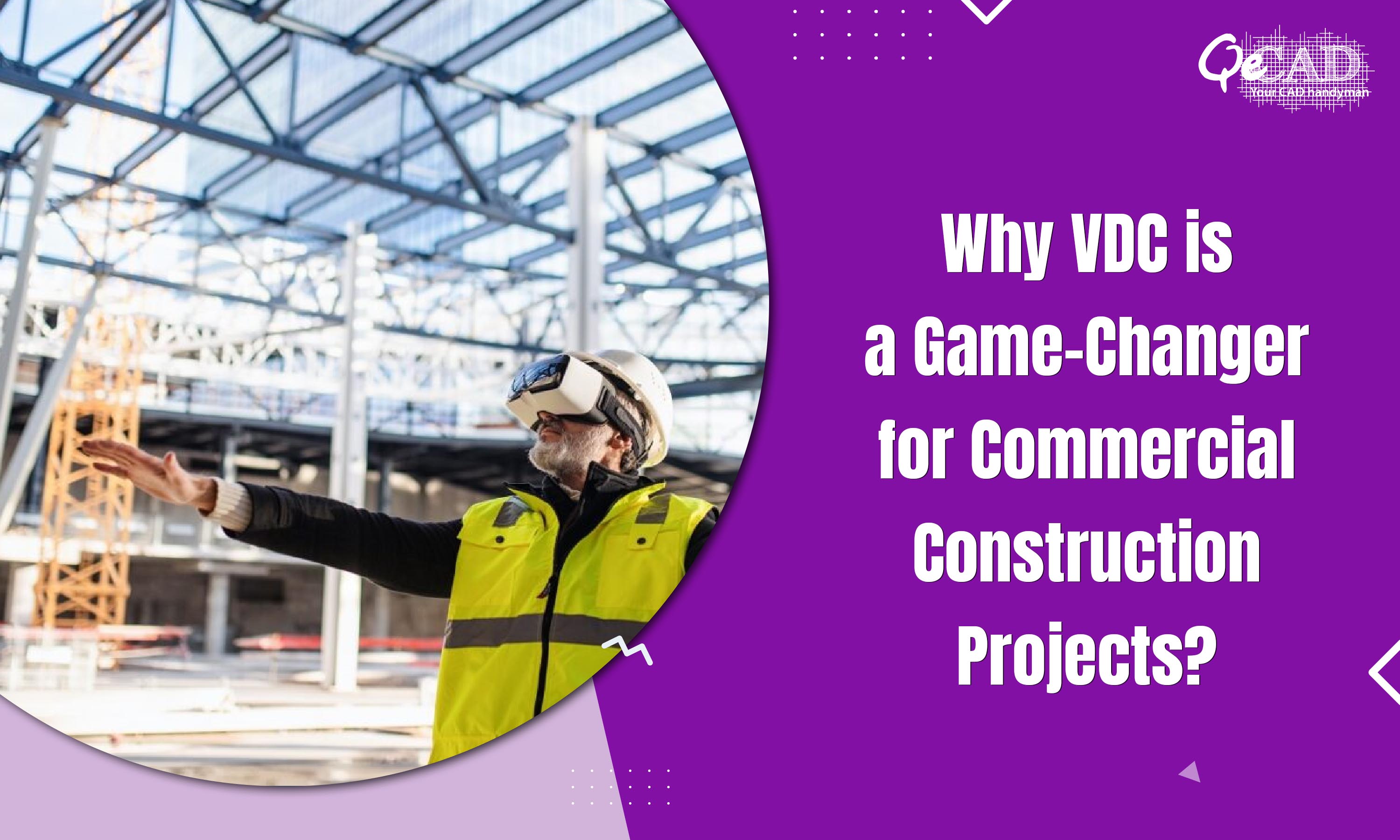
The commercial construction industry is evolving rapidly and the Virtual Design and Construction (VDC) is playing a pivotal role in this transformation. From boosting the coordination to improving the long-term operations, VDC is a game-changer for the developers who aim to stay competitive, efficient and sustainable.
In this blog, we will break down the key benefits of the VDC implementation that every commercial developer should tap into—backed by the real-world insights and stats.
What is VDC?
VDC is a collaborative method that integrates the building design, construction planning as well as the operations using the digital models. It brings together the stakeholders—architects, engineers, contractors and owners—on a shared platform to visualize, simulate, and even optimize the project’s lifecycle from the design to the post-construction level.
1) Enhanced Project Visualization and Planning
With VDC, stakeholders get a real-time, 3D visual context for all the project stages, eliminating the guesswork to a greater extent.
Did you know? Projects using VDC saw a 30% decrease in the design-related changes and a 20% improvement in schedule adherence, according to research by the Center for Integrated Facility Engineering (CIFE) at Stanford University.
This immersive visibility helps the commercial developers to make faster, data-driven decisions while minimizing the miscommunications.
2) Improved BIM Coordination Services
At the heart of VDC lies the BIM which offers the coordinated and clash-free design models. Through BIM Coordination Services, VDC helps to eliminate the costly conflicts between the MEP, structural as well as the architectural components before even the construction begins.
Stat check: Clash detection through BIM and VDC reduces the reworks by up to 40%, according to the Dodge Data & Analytics’ “SmartMarket Report” on BIM.
3) Cost Optimization
Construction delays and reworks are notorious cost drivers. VDC provides the detailed quantity take-offs, sequencing plans and even the budgeting models to accurately forecast the project expenses.
According to the McKinsey & Company, VDC-enabled companies reports the project cost savings of 10–15% on an average.
This allows the developers to maximize the ROI while ensuring the better allocation of resources.
4) Schedule Efficiency and Risk Mitigation
In commercial projects, time equals profit. VDC supports 4D modeling, which integrates the time-related data with the construction model for accurate scheduling and sequencing.
This dynamic simulation identifies the potential delays early and helps in re-sequencing the tasks in real-time hence ensuring the projects to stay on—or ahead of the schedule.
5) Better Collaboration and Stakeholder Communication
VDC platforms offer a cloud-based, centralized environment where all the project stakeholders can access, update and review the models simultaneously. This leads to:
- Fewer coordination issues
- Streamlined approvals
- Transparent decision-making
It also fosters the interdisciplinary collaboration especially useful in the large-scale commercial projects where multiple teams are involved.
6) Sustainability and Lifecycle Insights
Through energy modeling and performance simulations, the VDC helps to optimize a building’s sustainability before it’s even built. Developers can experiment with the materials, systems and layouts that enhances the energy efficiency and reduces the carbon footprint.
Additionally, the data-rich BIM models created during the VDC implementation serve as the valuable assets for the Facility Management teams post-construction.
Fact: The U.S. Department of Energy reports that digital twins and BIM-based facility data can reduce the operational costs by up to 35% over the building’s lifecycle.
7) Post-Construction Benefits: Facility Management
One of the often-overlooked benefits of the VDC is its role in post-construction. The models developed can be handed over to the Facility Management teams, providing them with:
- As-built data
- System layouts
- Maintenance schedules
- Equipment specs
This empowers the facilities teams to manage the assets proactively reducing the long-term maintenance costs and extending the building’s lifespan.
Final Thoughts
In today’s high-stakes commercial real estate environment, VDC is no longer a luxury—it’s a necessity. From cost and schedule savings to improved BIM Coordination Services and enhanced Facility Management, VDC offers holistic value throughout the project lifecycle.
Forward-thinking commercial developers who invest in VDC are setting themselves up for greater success, smarter operations and future-ready infrastructures.
Want to Integrate VDC in Your Next Project?
Leverage our end-to-end VDC and BIM Coordination Services to unlock your project’s full potential.
Reach out to our experts to learn how we help the commercial developers to stay ahead of the curve—digitally and practically.
